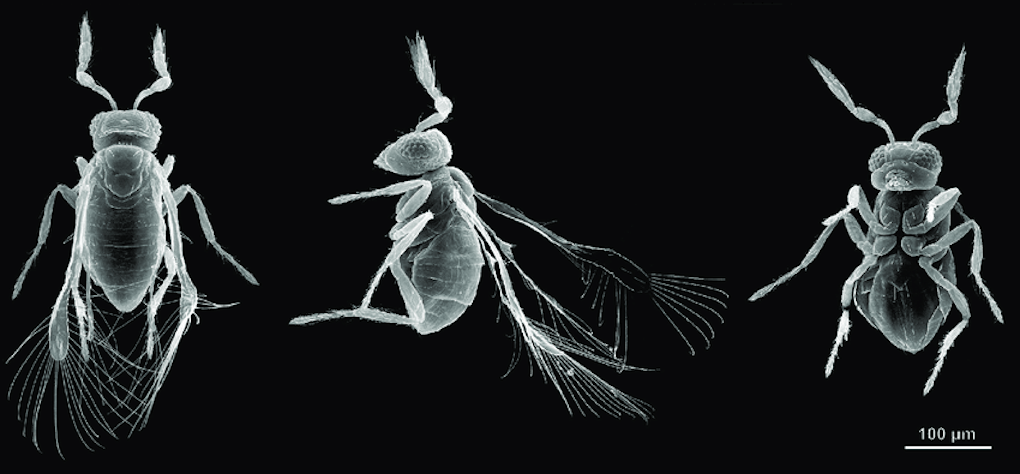On the Homepage: The Microscopic Wasp Megaphragma
The parasitic wasp Megaphragma amalphitanum is one-fifth the size of the widely studied Drosophila melanogaster fruit fly. The wasp has 7,400 neurons, compared with fruit fly’s 135,000, yet Megaphragma has many of the same behaviors and brain regions as its larger cousin. The wasp can therefore serve as a stripped-down version of larger insects and other more complex organisms.
Scientists at the Flatiron Institute are creating a “connectome” of the wasp — a map of every neuron and synaptic connection. To obtain such a map, scientists trace neurons through thousands of electron microscopy images taken after slicing the wasp’s head into ultrathin sections. Because even the tiniest brains contain a huge number of neurons spanning thousands of sections, tracing them is a laborious process requiring a combination of manual labor and artificial intelligence algorithms.



